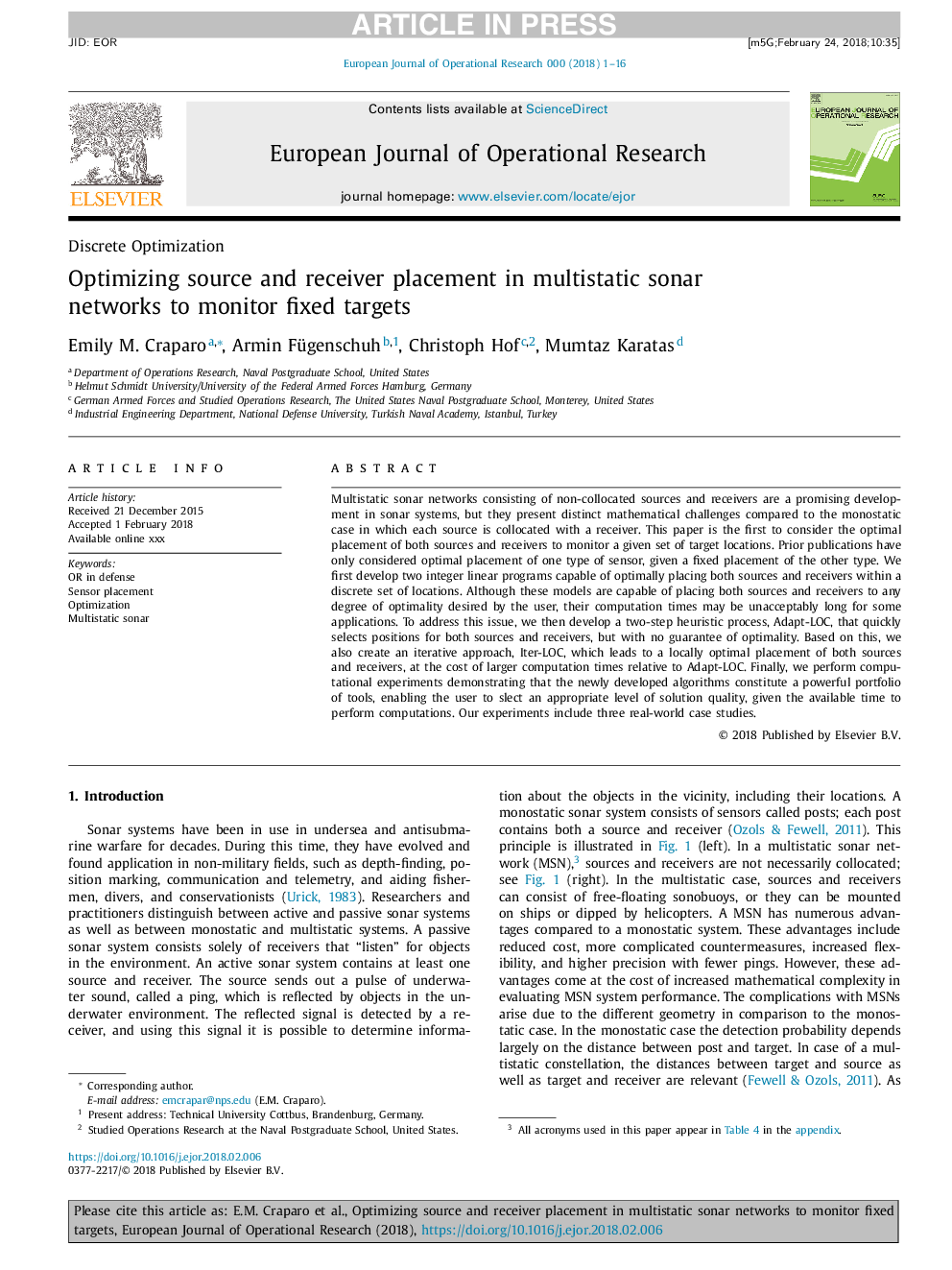| Article ID | Journal | Published Year | Pages | File Type |
|---|---|---|---|---|
| 11012402 | European Journal of Operational Research | 2019 | 16 Pages |
Abstract
Multistatic sonar networks consisting of non-collocated sources and receivers are a promising development in sonar systems, but they present distinct mathematical challenges compared to the monostatic case in which each source is collocated with a receiver. This paper is the first to consider the optimal placement of both sources and receivers to monitor a given set of target locations. Prior publications have only considered optimal placement of one type of sensor, given a fixed placement of the other type. We first develop two integer linear programs capable of optimally placing both sources and receivers within a discrete set of locations. Although these models are capable of placing both sources and receivers to any degree of optimality desired by the user, their computation times may be unacceptably long for some applications. To address this issue, we then develop a two-step heuristic process, Adapt-LOC, that quickly selects positions for both sources and receivers, but with no guarantee of optimality. Based on this, we also create an iterative approach, Iter-LOC, which leads to a locally optimal placement of both sources and receivers, at the cost of larger computation times relative to Adapt-LOC. Finally, we perform computational experiments demonstrating that the newly developed algorithms constitute a powerful portfolio of tools, enabling the user to slect an appropriate level of solution quality, given the available time to perform computations. Our experiments include three real-world case studies.
Related Topics
Physical Sciences and Engineering
Computer Science
Computer Science (General)
Authors
Emily M. Craparo, Armin Fügenschuh, Christoph Hof, Mumtaz Karatas,
